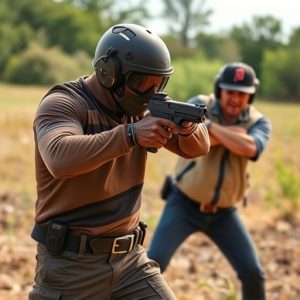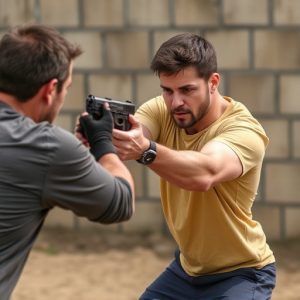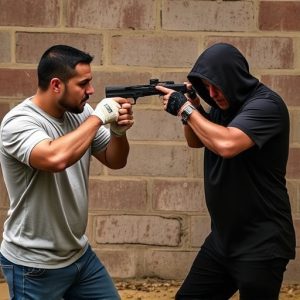Mastering Non-Lethal Weapons: A Guide to Legal Stun Guns & Certification
Obtaining non-lethal weapon training certification is crucial for responsible use of the most powerf…….
Obtaining non-lethal weapon training certification is crucial for responsible use of the most powerful legal stun weapons, which vary significantly in legality and employment guidelines across jurisdictions. This guide explains how to navigate regulations, safety protocols, and practical skills needed for effective handling, emphasizing the importance of staying updated on local laws. Certification programs, led by industry standards and expert mentors, cover legal considerations, safe deployment techniques, and de-escalation strategies, empowering individuals to manage high-pressure situations while adhering to legal boundaries.
“Discover the world of non-lethal weapon training certification, a crucial step towards responsible personal safety. This comprehensive guide breaks down the essentials, from understanding the legal considerations of navigating the landscape of stun weapons to exploring the most powerful legal stun weapons available. Learn about the rigorous training and certification process, preparing you for real-world applications, while also delving into ethical implications and the balance between power and responsibility.”
- Understanding Non-Lethal Weapon Training Certification: A Comprehensive Guide
- Legal Considerations: Navigating the Landscape of Stun Weapons
- Unlocking the Potential: Exploring the Most Powerful Legal Stun Weapons
- Training and Certification Process: Preparing for Real-World Applications
- Ethical Implications: Balancing Power with Responsibility
Understanding Non-Lethal Weapon Training Certification: A Comprehensive Guide
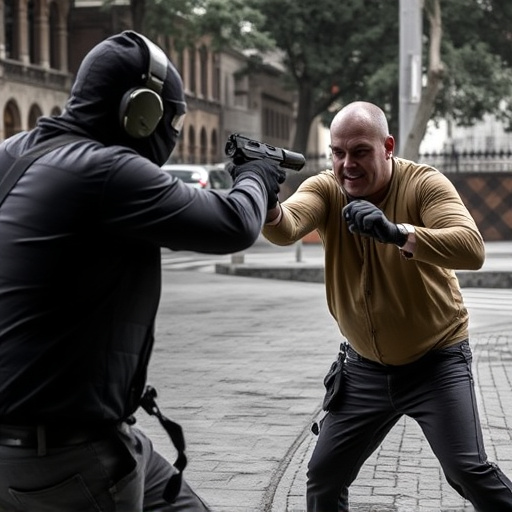
Non-lethal weapon training certification is a crucial step for individuals seeking to acquire and use powerful legal stun weapons responsibly. This comprehensive guide aims to demystify the process, ensuring that users are well-informed about the regulations, safety protocols, and practical skills required to handle these devices effectively.
The market offers a range of non-lethal options, with stun guns being among the most popular. These powerful legal stun weapons deliver electric shocks, temporarily incapacitating targets without causing permanent harm. Certification programs typically involve training in weapon handling, safety measures, and de-escalation techniques. Understanding local laws and regulations is essential, as they vary widely, determining which devices are legal and how they can be employed.
Legal Considerations: Navigating the Landscape of Stun Weapons
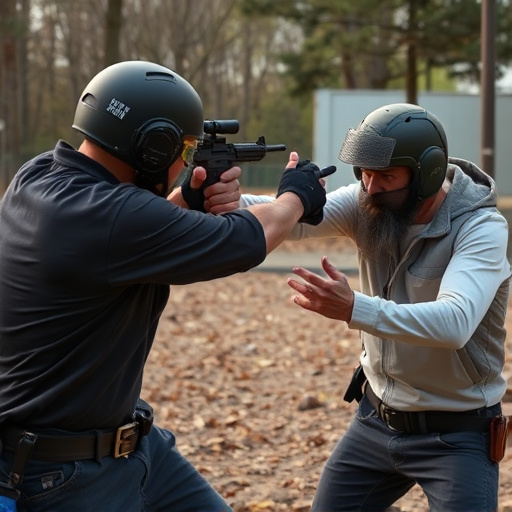
In the realm of non-lethal weapon training and certification, understanding legal considerations is paramount. When it comes to stun weapons, also known as electronic control devices (ECDs), the landscape varies widely across jurisdictions. This creates a challenge for individuals seeking to obtain certifications for carrying and using these powerful tools. The most stringent regulations often surround what are considered the most powerful legal stun weapons, those with high voltage and current outputs capable of incapacitating a target without causing permanent harm.
Navigating this labyrinthine legal terrain requires diligence and expertise. Laws governing stun weapons typically involve specific restrictions on voltage levels, weight, and permitted uses. Some regions allow only low-voltage devices for personal protection, while others permit higher-powered models for law enforcement use. Staying informed about these variations is crucial for anyone pursuing non-lethal weapon training certification to ensure compliance with local, state, or national regulations pertaining to the most powerful legal stun weapons.
Unlocking the Potential: Exploring the Most Powerful Legal Stun Weapons
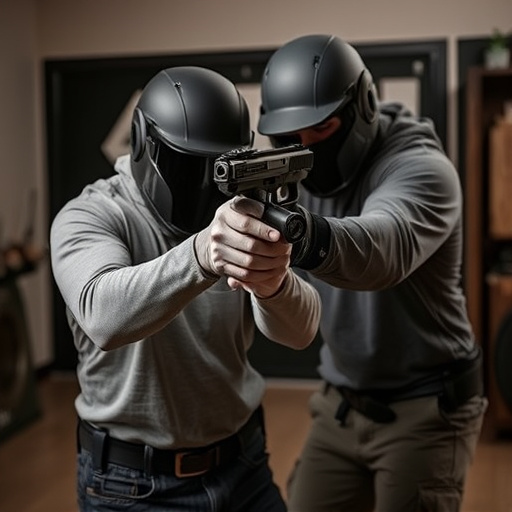
In today’s world, understanding and mastering non-lethal weapon training is a valuable skill set for those seeking to protect themselves legally. Among the arsenal of options available, the most powerful legal stun weapons stand out as game changers in personal safety. These advanced devices deliver an intense electric current, temporarily incapacitating a target without causing permanent harm.
The power and effectiveness of these stun guns, batons, or similar tools lie in their ability to disrupt muscle control through high voltage, low-current electrical impulses. This technology ensures users can defend themselves against aggressive assailants while adhering to legal boundaries. With proper certification, individuals equipped with these powerful legal stun weapons become formidable deterrents, empowering them to navigate potentially dangerous situations with enhanced confidence and safety.
Training and Certification Process: Preparing for Real-World Applications
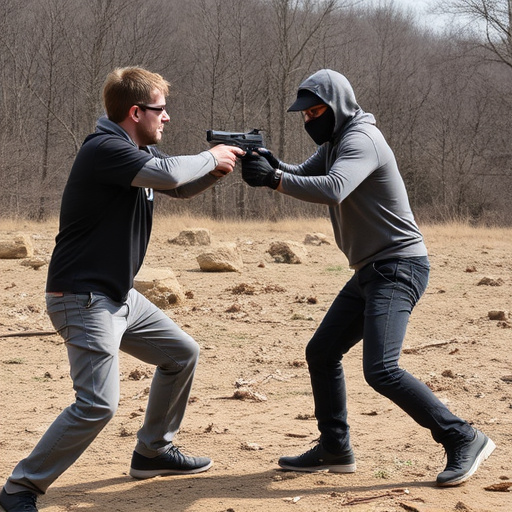
The journey towards obtaining a non-lethal weapon training certification involves rigorous preparation and a deep understanding of real-world applications. Aspiring professionals must first select an accredited training program that aligns with industry standards, ensuring they learn from experts in the field. These programs typically cover a range of topics, including legal considerations, safety protocols, and hands-on training with various non-lethal weapons, such as stun guns, pepper spray, and less-lethal ammunition.
Among the most powerful legal stun weapons available for certification training are those that deliver high electrical currents capable of temporarily incapacitating a target without causing permanent harm. Certification requires mastering techniques for safe deployment, de-escalation strategies, and understanding local laws governing their use. By successfully completing this process, individuals become equipped to handle high-pressure situations, ensuring public safety while adhering to legal boundaries.
Ethical Implications: Balancing Power with Responsibility
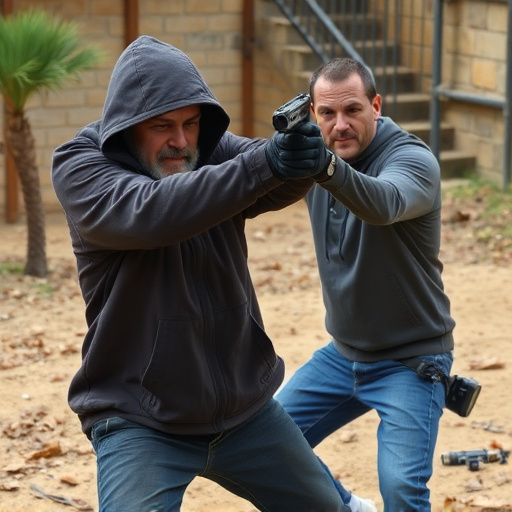
The rise in non-lethal weapon training and certifications raises important ethical considerations, especially as individuals learn to wield what could be considered some of the most powerful legal stun weapons available. With great power comes great responsibility; this adage holds particularly true in the context of non-lethal force. The impact of these weapons extends beyond physical effects, touching upon public safety, individual rights, and societal trust.
As training programs teach individuals how to use stun guns or other electroshock devices, instructors must emphasize ethical deployment. This includes scenarios where de-escalation techniques should be prioritized over the immediate application of force. Balancing the potential for harm with the need to control a situation is crucial, ensuring that the power these weapons hold is used responsibly and proportionally, upholding the law and safeguarding citizens.
In conclusion, non-lethal weapon training certification is a comprehensive process that combines legal knowledge, practical skills, and ethical awareness. Understanding the nuances of legal considerations, specifically regarding the use of the most powerful legal stun weapons, is paramount. Through rigorous training and certification, individuals can prepare for real-world applications while upholding responsible practices. This ensures that those equipped with these tools do so effectively and ethically, contributing to a safer society.
